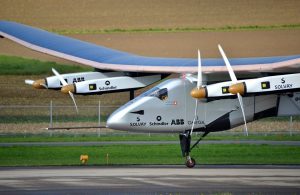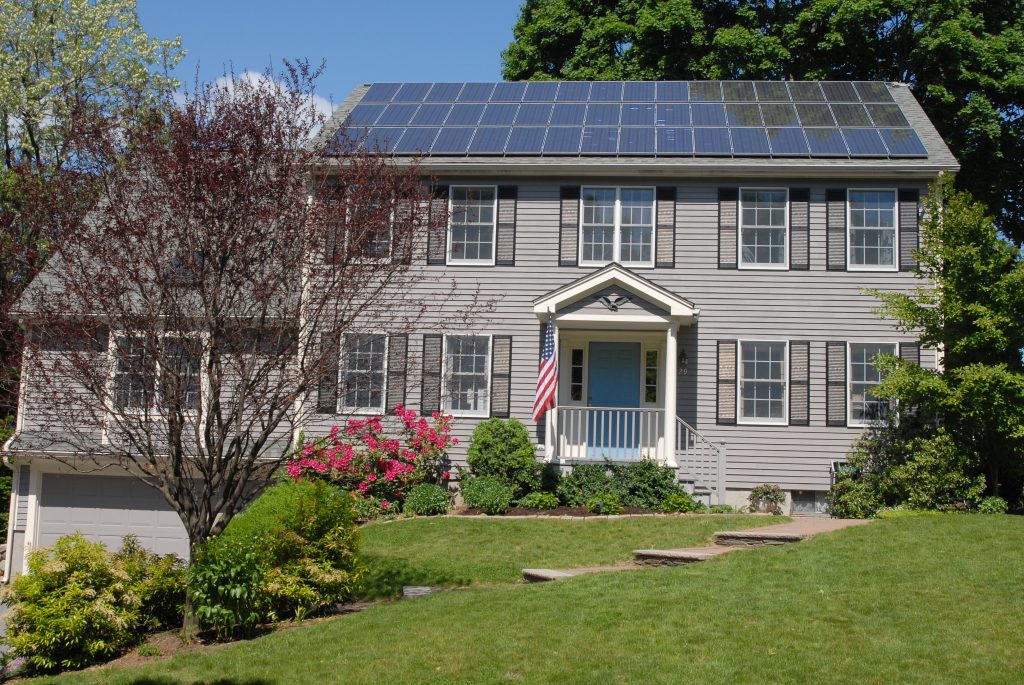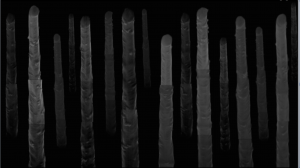Top 5 Innovations in Solar and Photovoltaic Power
The Department of Energy (DOE) has hit a key goal in solar energy cost reduction three years ahead of schedule, according to The Hill.
The SunShot Initiative originally aimed to lower the price of electricity generated by utility-scale solar photovoltaic systems to $0.06 per kilowatt hour by 2020. This goal has already been achieved, and the residential and commercial sectors are 86 and 89 percent respectively closer to achieving their goals.
Here’s a great visualization of the growth of solar power in the US over the last 10 years:
With these accomplishments in mind, the DOE has pledged to expand the goals of the SunShot Initiative to fund research into new, innovative ways to more reliably store energy as well as create solar infrastructure — but the DOE isn’t the only one researching and contributing to innovation in the solar energy space.
Here are 5 of the latest innovations in solar and photovoltaic power:
Wearable Solar Power

Military wearable solar prototype
Solar cells aren’t that uncommon, really — but they definitely are bulky, rigid, and generally big. However, following common technological trends and innovations, not only are these solar panels becoming smaller and smaller, they will soon be wearables.
Alasdair Wilkins, writing for Inverse, reports that researchers at the University of Tokyo and Japan’s RIKEN research institute have created a solar cell so small and flexible that it could eventually be woven into our clothing. They measure three millionths of a meter in thickness, and have a special coating that keeps water and air out while letting light in. In the future, this could mean that your clothes charge your smartphone, laptop, and any other device you take with you on the go.
Solar-Powered Planes

Solar Impulse 2
Topping the list of Best Company’s “4 Game-Changing Developments in Solar Energy†is the solar-powered plane. Apparently, a company called Solar Impulse is leading the game in this department with Solar Impulse 2, the second take on their project, which is the first fully sustainable solar airplane.
Solar Impulse 2 has a wingspan larger than a Boeing 747 aircraft, but weighs significantly less and produces no CO2 emissions. Bertrand Piccard flew completely around the world in it back in July of 2016, marking a historic moment.
“I hope people will understand that it is not just a first in the history of aviation, but also a first in the history of energy,†he said.
Solar Roofing
Elon Musk made headlines with his November 2016 announcement that he’d be merging Tesla and SolarCity to bring the world affordable solar shingles.

“Solar Roof complements your home’s architecture while turning sunlight into electricity. With an integrated Powerwall battery, energy collected during the day is stored and made available any time, effectively turning your home into a personal utility,†explains their website. “Glass solar tiles are so durable they are warrantied for the lifetime of your house, or infinity, whichever comes first.â€
Solar roofing has already been gaining popularity, with prices for solar arrays dropping by 29 percent since 2015. However, another report by Forbes, utilizing the solar calculator on Tesla’s website, shows that the average homeowner would have to shell out around $51,200 for 70 percent coverage utilizing Tesla’s new solar roofing. This could lead to increased savings in the future, but only time will tell.
Solar Windows

Solar windows turn buildings into arrays
Choosing the best energy efficient windows currently comes down to differences in inter-pane gas and glass glazes (try saying that five times fast!) which allow sunlight through but minimize how much it heats the house. However, in the future, it could involve choosing which window panes convert sunlight to energy most efficiently, and simply using that energy to fuel climate control.
Glenn McDonald writing for Seeker.com reports that SolarWindow Technologies, a Maryland-based company, has “developed a liquid ‘organic photovoltaic solar array’ (OPV) made from a mixture of carbon, hydrogen, oxygen, and nitrogen, that can be applied to transparent surfaces.†They’re looking to coat the windows of skyscrapers and other large commercial buildings to create arrays that can outperform a traditional solar array by as much as 50 times.
While they have been working on the project for 20 years, SolarWindow Technologies has yet to release a functioning product. Still, sooner rather than later, we might be looking through windows that are powering our homes and offices.
Nanowire “Hairy†Panels

Conical nanowires capture light via increased surface area
Iterations of the “hairy†nanowire-based solar panels have been around since at least 2010, with first reports of new solar cells that were actually made out of 98 percent plastic and which could utilize 96 percent of incident light. While those solar cells were only a few square centimeters back then, researchers at the Technical University of Eindhoven in the Netherlands have been innovating on the design since then.
The way that these nanowires work is that they increase the absorption surface area with vertically standing, conical, hair-like wires. Improving the performance of these cells essentially comes down to “increasing the internal radiative efficiency of the cells, which correlates to decreasing the number of defects.â€
The good news is that solar is on the rise globally, and advancements are being made quickly. In just a few years time, many of our systems will rely on power via renewable energy, and it’s because of the innovations in solar and photovoltaic power today.
Wait! Before you go…
Choose how you want the latest innovation content delivered to you:
- Daily — RSS Feed — Email — Twitter — Facebook — Linkedin Today
- Weekly — Email Newsletter — Free Magazine — Linkedin Group
 Andrew Heikkila, a tech enthusiast, and writer from Boise, Idaho, and a frequent contributor to Innovation Excellence. He also writes for Tech Crunch. You can follow him @AndyO_TheHammer
Andrew Heikkila, a tech enthusiast, and writer from Boise, Idaho, and a frequent contributor to Innovation Excellence. He also writes for Tech Crunch. You can follow him @AndyO_TheHammer
NEVER MISS ANOTHER NEWSLETTER!
LATEST BLOGS
Four ways you can ensure employees take accountability for their work
One of the most important driving factors for any successful business is a high-performing team. Having people working for you…
Read MoreWhat is digital upskilling and why is it important?
Photo by Annie Spratt on Unsplash In a world of business that never stands…
Read More



